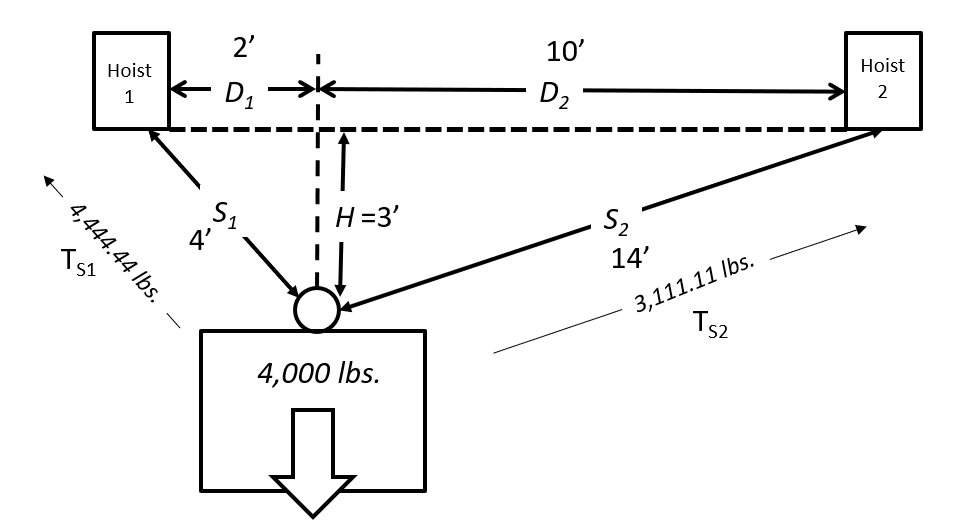in this example calculation, we have created a diagram containing the load, the 2 slings attached to the load, and the distances from the center of the lift point to each of the hoists that will be used to lift this load. We know the weight of the load to be 4,000 pounds, and using our tape measure, we find that the length of sling 1 is 4 feet, and the length of sling 2 is 14 feet. We also measure the horizontal distance from the center of the lift point to hoist 2, which measures 10 feet, and the horizontal distance from the center of the lift point to hoist 1, which is 2 feet. Last, we measure the vertical height from the load pick point, to the lift anchor to be 3 feet. We can now use all these values and substitute on each equation for calculating the Tension load for each of the slings. After calculation, we observe that the tension force acting on sling 1 is 4,444.44 pounds, and the tension on sling 2 is, 3,11.11 pounds. Note that the tension forces acting on the slings can be higher than the weight of the load itself. This does not mean the weight of our load has increased. When an object is lifted at an angle, the tension force on the lifting sling is greater than the weight of the object because it must overcome both the weight of the object and the force of gravity acting at an angle.

To calculate the load on each sling segment we use the following equations:
TS1 = (Load x D2 x S1 ) / (H(D1 + D2))
TS1 = (4,000lbs. x 10′ x 4′) / (3′(2’ + 10’))
TS1 = 4,444.44 lbs.
TS2 = (Load x D1 x S2) / (H(D1 + D2))
TS2 = (4,000lbs. x 2’ x 14′) / (3′(2’ + 10’))
TS2 = 3,111.11 lbs.
